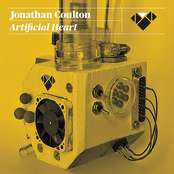I’ve long held an interest in why Clayhanger village stopped flooding. This may seem like an odd preoccupation, but please bear with me. For decades the small, low lying settlement west of Brownhills was regularly left awash to some depth after heavy storms. Even after installation of a large pump and land drain a century ago, the area continued to be swamped. Such was the problem that Clayhanger was seen as a problematic place to live; lower than most of the area around it, and in the lee of railway and canal embankments and spoil heaps, it seemed that little could be done to stop the misery. Yet somehow, at some point around five decades ago, it all changed.

Modern mapping shows that the area around Clayhanger is still wet, marshy and riddled with springs, natural drains and pools. Click on image for a legible version.
I’m interested in both the hydrological and civil engineering aspects of this change, but just as fascinating must be the social vision that led to the solution. The trouble is, I can’t seem to find anything out about how the change was effected, who designed it, who paid for it or even who worked on the project. That’s what I’m hoping readers can help me with.
The problem of flooding clearly stemmed from the fact that Clayhanger lies in a low position, surrounded by wetland, marsh and several rises of the River Tame (at this point the major one is the Ford Brook). Coupled with increasingly large areas of hardstanding and embankments for roads, canals and rail projects, it seems that water was funneled into the village mainly from The Spot, which itself was then much lower and wetter than today.

This phot from 'Memories of Brownhills Past' by Clarice Mayo & Geoff Harrington was taken during one of Clayhanger's notorious floods. This would be at about the spot where the modern pumping station stands.
Adding to the problem were at least two canal overflows, which appear to have drained into the brook via open channels and basic culvert systems. This must have placed pressure on an already slowly draining landscape and made flooding far more likely.
At some point around the fifties and sixties, the decision to solve the hydrological challenge that Clayhanger presented was taken once and for all. It’s historical record that the old pumping station – which many will remember as a ruin in the middle of the old refuse tip – was abandoned in 1956. Whether this was submission or due to the facility becoming redundant is unclear, but at some point in this period, a whole new drainage system was installed across the spot, which still functions today.
This drain must have been a large project for Brownhills; it appears to take the runoff from both canal overflows, a spring and various land drains, relieving pressure on the Ford Brook. A small, modern pumping station was constructed at the edge of the village, just near the junction of Bridge Street and High Street, which appears to pump water uphill along the embankment behind the new pool, where the slag heap used to be. Where it goes from there is unclear; it seems likely that it feeds into Clayhanger Sewage Works, but a second pumping station exists in Green Lane, which would be about right to feed on to Goscote, a much larger facility. Excavating this drain, laying the pipes and erecting the chambers must have been a very big undertaking, yet I’ve never heard it spoken of. Someone must know.

My suppositions and surface evidence of Clayhanger's eastern drainage system. Click on image for a legible, full-size version.
I recently took a look around the area to try and find surface evidence of what lay beneath the ground. It’s hard to plot the exact course, as most of the drain hatches are covered by undergrowth and scrub. I found several, including one by the old railway embankment midway across the common which had recently been removed. Often, the only clue that you’re near one is the continuous audible rush of water flowing beneath your feet.
When I was a lad, one of the features of the desolate landscape of The Spot and Slagheap (we kids called this ‘The Blackie’) were the huge concrete access chambers for the drains, standing clear of the land around them. It was a game to climb up and sit on the access lids. Occasionally, one would be removed, and it was a long way down to the water that always flowed noisily beneath. At the rear of the slag heap behind the big house, these features were standing proud a good 3 or 4 metres. It was almost as if the eventual level of the land was known decades in advance. When the heap was removed, all the chambers were incorporated in the landscape. If one looks at the slope behind the new pool, three humps in the embankment can clearly be seen, placed to conceal the access chambers positioned there.
One drain I remember in particular sits on the grassed area at the start of the path that crosses the spot, just in the undergrowth on the left. On the opposite side of the canal there’s a similar cover at the bottom of Pier Street that again, which always echoes to the flow of water, whatever the weather. I guess the sewer must cross under the canal. Digging that must have been interesting.
Water from the overflow opposite the canoe centre disappears into a culvert heading toward the main drain, and a new pond, created when the common was landscaped, collects runoff from ditches and natural drains, before overflowing into a similar culvert. This system has clearly been thoroughly thought out.
In the small copse between the canal overflow and new pond there runs a die-straight dry channel. On the OS Detail map at the beginning of the post, the end of this channel near the canal is marked ‘Sluice’ – this is the one I’m sure I recall from my childhood, but can no longer find any evidence of.
Walking the length of the path that I believe shadows the course plotted by the drainage engineers, you eventually come to the pumping station installed at the roadside in the lowest part of Clayhanger village. This hosts quite large machinery, a 1-tonne lifting gantry is installed for lifting the pumps in and out. It’s also noticeable that the installation has a telephone connection – it seems that if this equipment fails, it phones home. It’s unclear where the water goes, and exactly what it consists of. There are several hatches in the road nearby, and the sign on the compound describes it as a sewage pumping station, so it probably handles the effluent from the village in addition to storm drainage. In the days of the steam pump, water was pumped to Clayhanger Sewage Works, just across the fields, but I’m unsure if that’s the actual destination. either way, the drain leaves the station to the rear and heads off toward the fields to the south.
This is a difficult landscape with a complex, challenging pre and post-industrial history. Under Clayhanger Common – The Spot – lies a huge quantity of domestic and industrial refuse, capped with mining spoil and landscaped carefully with imported topsoil, which requires considered monitoring. Measurement wells dot the common where groundwater samples are regularly taken to assess the conditions below.
Clayhanger is also an area that has seen a massive increase in housing development, more than doubling the size of the formerly small community, yet the drains installed decades ago still cope admirably. That’s a huge civil engineering achievement, and I’d love to know more about it.
If any readers can remember the system being built, or even the history of the tip, please do comment. I’d love to learn more about it. It’s a subject that’s accepted by the community, but not recorded. Let’s see if we can correct that.






 RSS - Posts
RSS - Posts










Pingback: Tweets that mention Circling the drain « BrownhillsBob's Brownhills Blog -- Topsy.com
A quick trawl through Google Books reveals very little. Only one mention of “Clayhanger Sewerage scheme” after 1950 and that appears in The Surveyor and municipal and county engineer: Volume 116 (1957) The snippet says …
“Approval is awaited for the Clayhanger Sewerage Scheme which was submitted to the Ministry of Housing and Local Government last October. Subject to approval being given in the near future, it is hoped substantially …”
Another snippet then goes on …. “It is hoped to complete the scheme by Autumn 1958”
In the Gas journal, Volumes 265-266 (1951) is the following …
“Clayhanger, Walsall Wood. — The land and houses between the railway and canal bridge have subsided about 12 ft. Fourteen houses all using gas had to be abandoned and are now demolished. The water covering the site is now level with what …”
Could this have prompted the scheme?
Thanks, Roger, bang on the money, as usual. My grattitude is boundless.
I think the first is definitely the project I’m thinking about. It would be after the failure and abandonment of the pumphouse in the middle of the Spot, and just looks right considering the visible building materials etc.
The second is interesting. Maps of that period (50’s and on) record a pool on that side of the road that appears, which is I guess as a result of that sink. It may well have caused the ultimate action to solve the problem, and subsidence is something locally that persists, and I shall cover in another post.
Thanks, you’re really quite the star…
All the best
Bob
The overflow looks to have been poshed-up over the years but it had certainly been there for a long time in the 1950s. As kids at that time, around bonfire night, we found some bangers that would go off underwater, in Joe’s on the High Street. It was great fun to take them to the overflow and set them off in the stream which used to run under the fence at the far end. It looks as if it’s a pipe now.
You had to be a bit sharp with them – light the fuse, shove them under a stone, run and see if the stone was blown out of the stream.
I initially thought it was a recent addition, but then worked out it must have been quite old. There are three locally – the one by the Pier Street bridge, the one by Clayhanger Bridge and there’s a thirdup near Wharf Lane on the Anglesey Branch. It didn’t occur to me until I was debating the matter with a mate on Saturday night that the reason for three in close proximity is that the canal may be blocked for maintenance and draining at Catshill Junction, so the side with water remaining always has a drain. I’d guess thats the reason for two sluices, too. Wonder if there’s one on the Anglesey anywhere?
Ah, fireworks at Joes. And Woods, up Lichfield Road, as a kid.
Best regards
Bob
Such a great blog, I really enjoyed it!
Hi Bob, just wondering if you could settle a question that a few of us in the office are having trouble answering.
Where is the actual source of Ford Brook in Clayhanger? IS the source the actual wetland area or is it just a place where ford brook emerges having started somewhere else?
The Ford Brook rises from several issues in the north Clayhager and Swag areas. It doesn’t really have one source point, seeming mostly to consist of overspill from the settlement ponds between the spot and the village itself. Several springs feed through gravel drains, one combined source emerging at the foot of the old railway embankment. One of the difficulties is that the landscape gas changed so much that the original feeds cannot any longer be discerned.
Broadly speaking it’s a wetland drain, but issues and springs contribute.
Best wishes
Bob
Cheers Bob for the quick response 🙂 You know your beans!
Pingback: Filthy business « BrownhillsBob's Brownhills Blog
Pingback: Downstream « BrownhillsBob's Brownhills Blog
Pingback: Other channels | BrownhillsBob's Brownhills Blog
Pingback: Having a blast? | BrownhillsBob's Brownhills Blog
Pingback: Sunk island | BrownhillsBob's Brownhills Blog
Pingback: Fighting a losing battle | BrownhillsBob's Brownhills Blog